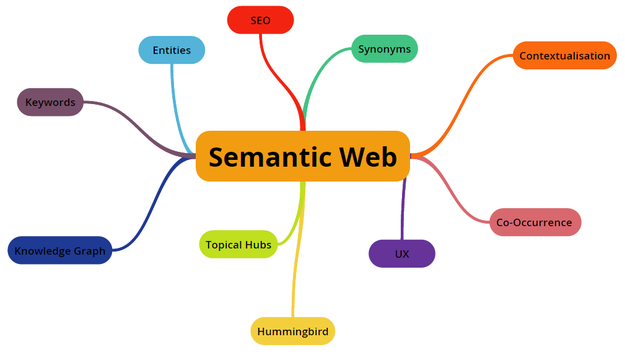What is Keyword Stemming?
Keyword stemming refers to the process of reducing variations of a keyword to its basic root form. For instance, the stemmed version of the words “running”, “runner”, and “ran” is “run”. This technique helps search engines find relevant web pages regardless of the exact word variation used by the searcher.
A Brief History of Keyword Stemming in SEO
Historically, search engines used basic algorithms to match exact search queries with content on the web. As the web evolved, it became clear that users were missing out on valuable content due to slight keyword variations. Stemming was then introduced to bridge this gap, ensuring that content was discovered and presented based on the root intent of the search.
How Keyword Stemming Works
1. Understanding Morphemes
A morpheme is the smallest grammatical unit in a language. It can be a word itself or a part of a word such as a prefix, suffix, or infix. Morphemes can be categorized into two types:
- Root Morphemes: These form the core meaning of a word and can stand alone (e.g., “play” in “playing”).
- Affix Morphemes: These are added to root morphemes to modify their meaning or create a new word (e.g., “un-” in “undo”).
2. Stemming Process
Stemming involves trimming a word down to its root form. This is often done by removing affix morphemes.
Example: From the word “running”, the suffix “-ing” is removed to get the stem “run”.
3. Algorithms and Techniques
There are various algorithms used for stemming, with each offering different levels of complexity and accuracy:
- Porter’s Algorithm: One of the most popular stemming algorithms that works by applying a set of rules to trim words.
- Snowball Stemmer: An improvement on Porter’s Algorithm, with added support for various languages.
- Lancaster Stemmer: Known for being aggressive in its stemming, leading to more concise stems but potentially losing some meaning.
4. Language Dependency
Different languages have different grammatical structures, and hence, the stemming process varies across languages. Understanding the morphological rules of a specific language is crucial for effective stemming.
5. Limitations and Challenges
- Over-stemming: When too much of a word is cut off, leading to a loss of meaning.
- Under-stemming: When not enough of the word is removed, resulting in different words having different stems when they should be the same.
- Irregular Forms: Some words don’t follow standard rules, making them challenging to stem accurately (e.g., “is” and “be”).
Examples of Stemming in Action
1. Basic Verb Forms
- Walking → Walk
- Danced → Danc
- Writes → Writ
2. Adjectives and Adverbs
- Happily → Happi
- Quicker → Quick
- Easiest → Easi
3. Nouns with Prefixes or Suffixes
- Unhappiness → Unhappi
- Connection → Connect
- Operators → Operat
4. Complex Word Forms
- Disagreement → Disagree
- Normalization → Normal
- Automatically → Automat
5. Words with Multiple Affixes
- Unbelievably → Unbeliev
- Reconsideration → Reconsid
- Undesirable → Undesir
6. Words That Might Pose Challenges
- Caring → Car (This can be problematic as “car” and “caring” are contextually different)
- Dying → Dy (Here, the stemmed word “Dy” doesn’t hold contextual value)
Key Takeaways
- Stemming isn’t Lemmatization: Unlike lemmatization, which reduces words to a linguistically accurate base form, stemming focuses on removing affixes without guaranteeing the result is a valid word. For example, “easiest” is stemmed to “easi”, which isn’t a real word, while its lemma would be “easy”.
- Stemming Algorithms Vary: The results of stemming can differ based on the algorithm used. For instance, while one algorithm might stem “connection” to “connect”, another might stem it to “connec”.
- Context is Crucial: Some words, when stemmed, might lose their original context. It’s essential to consider the application of stemmed words carefully.
- These examples give a sense of how stemming works in action. However, it’s worth noting that stemming’s effectiveness often depends on the specific use case, language, and the stemming algorithm in play.
Why Stemming is Important
Enhancing Content Relevance
Using stemming allows websites to be ranked based on the essence or intent of their content rather than just exact keyword matches. This ensures users receive content that’s most relevant to their queries.
Expanding Keyword Reach
Stemming broadens the range of keyword variations a piece of content can rank for. Instead of creating separate content for “buying”, “buys”, and “buy”, a single well-optimized piece can cover all these terms.
Boosting On-Page SEO Potential
When content is optimized with stemmed keywords, it can cater to a wider range of search queries. This increases the chances of higher rankings and, consequently, more organic traffic.
Tools and Techniques for Effective Keyword Stemming
Popular SEO Tools with Stemming Features
SEO platforms like SEMrush, Ahrefs, and Moz have features that help identify keyword variations, some of which are rooted in stemming principles. Leveraging these tools can enhance your SEO strategies.
Tips for Implementing Stemming in Your SEO Strategy
- Conduct comprehensive keyword research to identify root forms.
- Integrate stemmed keywords naturally into the content.
- Regularly audit and adjust based on search engine algorithm changes.
The Future of Keyword Stemming in a Semantic Web World
The Semantic Web, an extension of the current web, aims to make data more interoperable and machine-readable. It envisions an environment where machines can comprehend content just like humans do, thereby making data interaction richer and more meaningful. With advancements in semantic understanding and artificial intelligence (AI), the future of keyword stemming, especially within SEO, is bound to evolve. Here’s a look into the potential trajectory:
1. Emphasis on Semantic Understanding
As search engines become more advanced, they are focusing more on understanding the context and intent behind a search query rather than just matching keywords. This shift suggests that while stemming will continue to have relevance, the focus might move toward semantic associations between words.
2. Machine Learning and AI
AI models, especially deep learning networks, can grasp context better than traditional algorithms. With the rise of machine learning in search, exact keyword matches (and by extension, stemmed keywords) might become less critical as AI models decipher user intent more precisely.
3. Rich Data Formats and Schema Markup
The Semantic Web relies heavily on structured data and schema markups, allowing search engines to understand the context of data better. With such information at their disposal, search engines might rely less on stemmed keywords and more on the actual context in which a word is used.
4. The Evolution of Voice Search
As voice search becomes more prevalent, natural language processing (NLP) is of utmost importance. With voice queries often being conversational and long-tailed, the role of stemming might be overshadowed by the need to understand and process natural language more effectively.
5. Multilingual SEO and Language-specific Challenges
While stemming works effectively in languages with a rich morphological structure, it might be less efficient in others. As the Semantic Web aims for global interconnectivity, the role of stemming in multilingual SEO might need to be re-evaluated, giving way to more advanced linguistic models.
6. Rise of Topic Clusters and Pillar Content
SEO is witnessing a shift from keyword-focused content to topic clusters and pillar content. This approach focuses on covering a topic in-depth, suggesting that while individual keyword variations (and their stems) are essential, a holistic approach to content might gain more prominence.
7. Transition to Searcher Intent Over Keywords
Stemming is fundamentally about keyword variations. However, with the Semantic Web, the emphasis is likely to shift from keywords to searcher intent. This means SEO strategies might pivot towards answering user queries in a comprehensive manner rather than optimizing for specific keyword variants.
8. Adapting to Changes in Search Engine Algorithms
Staying updated with algorithm changes is key. As semantic understanding grows, stemming will need to adapt to remain effective. Regularly revisiting and tweaking your SEO strategies is a must.
Conclusion
Understanding the significance of keyword stemming in SEO is essential. As the digital landscape evolves, webmasters and SEO professionals must not only utilize stemming but also adapt to the increasing emphasis on semantic search. Navigating these intricate dynamics can be challenging, but partnering with Ubique Digital Solutions can transform this complexity into an opportunity.
Our team of experts can help you with our customized digital solutions designed to propel your online presence, foster growth, and achieve unparalleled success. Reach out to us today.
FAQs
Q: Can over-reliance on stemming harm SEO?
Yes, over-reliance can lead to content that’s not user-friendly or loses context. It’s essential to maintain a balance between stemmed keywords and naturally written content.
Q: How does keyword stemming affect PPC campaigns?
In PPC, stemming can help broaden ad reach by matching ads with a wider range of relevant queries, potentially increasing clicks and conversions.
Q: Are there languages where keyword stemming is less effective?
Yes, stemming is most effective in languages with a rich morphological structure like English, Spanish, or Russian. In contrast, languages like Chinese, where words don’t have typical prefixes or suffixes, may not benefit as much.
Q: How do I know if my SEO tool uses stemming?
Most modern SEO tools incorporate stemming in some form, especially in keyword research features. Reviewing the tool’s documentation or reaching out to customer support can provide clarity.





















